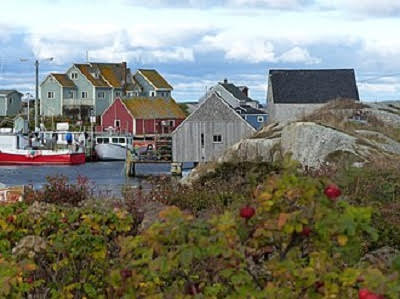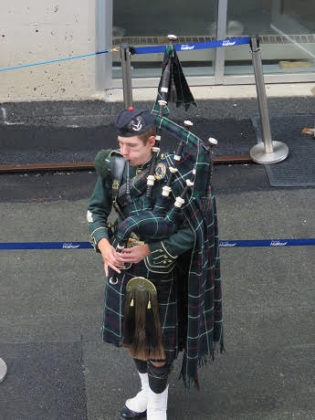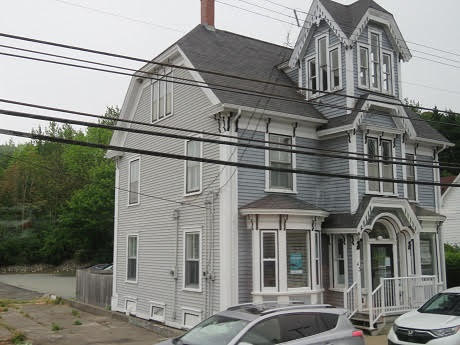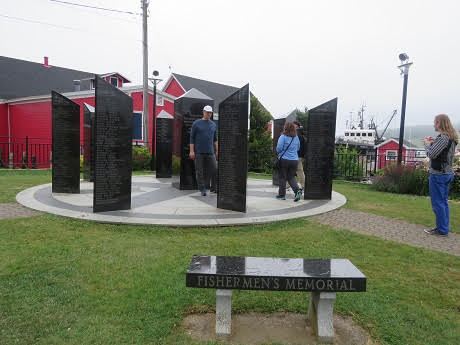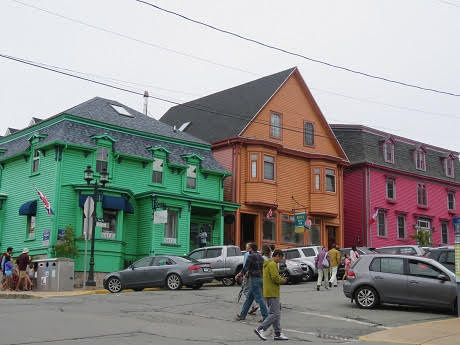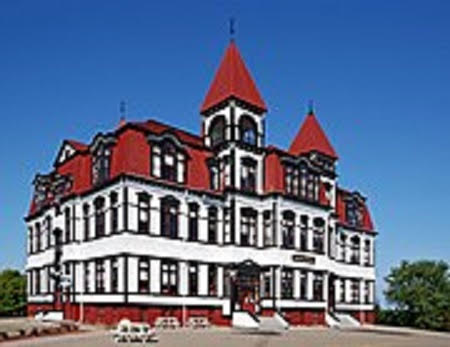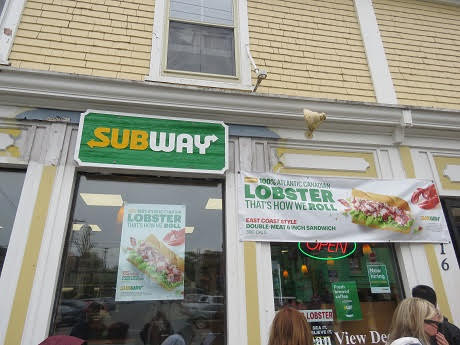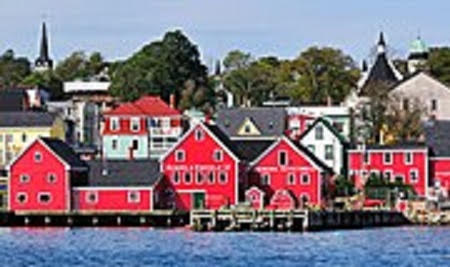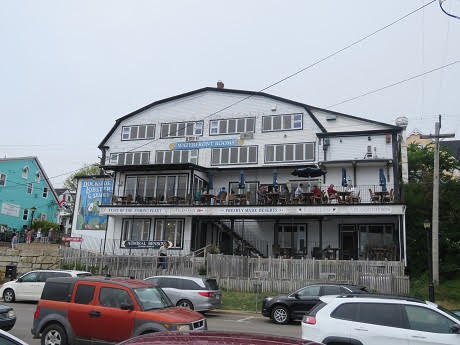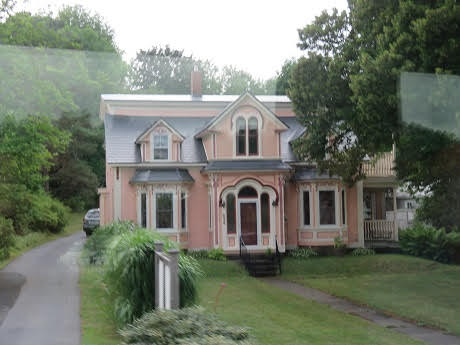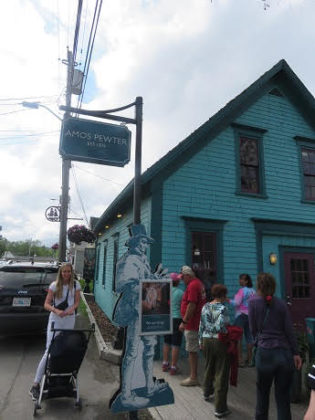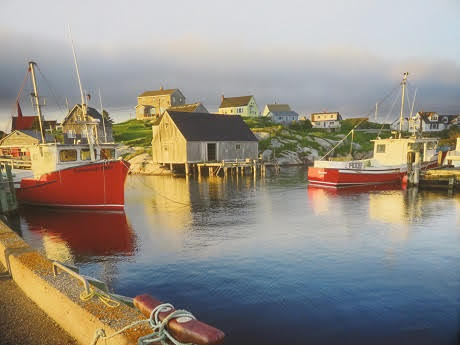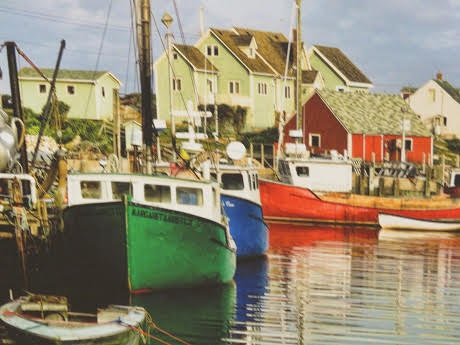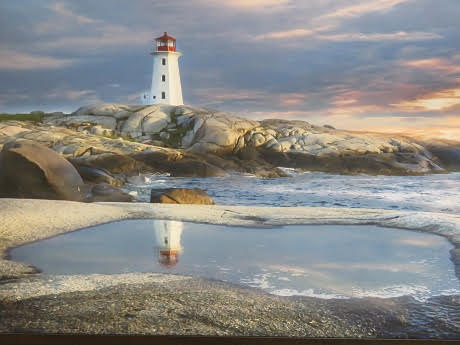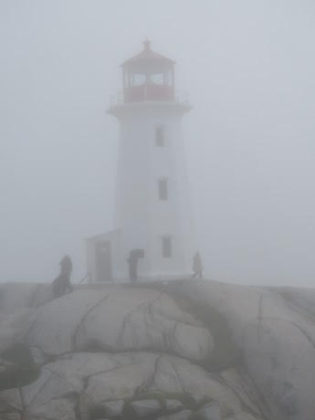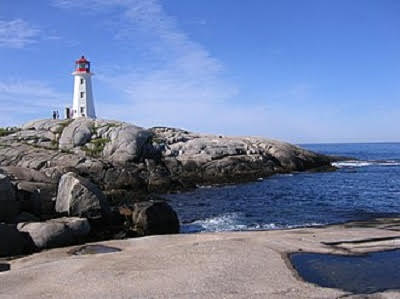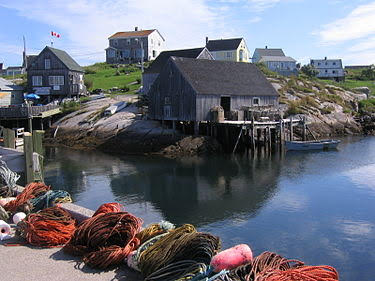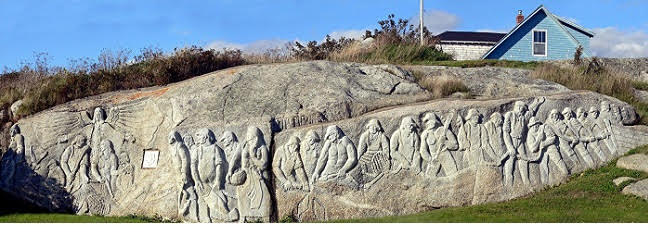By TR Robertson
Our third stop on our cruise was in Halifax, the capital city of Nova Scotia. Their harbor is the second largest natural harbor in the world. We were scheduled to arrive at noon, so the morning on the Insignia was spent attending several guest lectures about this area of Canada. Dr. Sherry Hutt spoke about the early history of Nova Scotia and Dr. Roger Leferer spoke about the variety of birds we would be seeing in the northeastern regions of Canada. Nova Scotia has 4,600 miles of coastline and over 1,000 lakes.
Nova Scotia was first settled by the French in 1610, although Vikings may have visited the area long before that. The islands and mainland were the traditional lands of the Mi’kmaq peoples. Halifax was first called Port Royal by the French. In the 1700’s the British would take over this area in the name of King James I as the harbor was considered a safe harbor and the colonialists were stirring an uprising in the colonies. British troops would arrive here prior to moving to American ports. The name Port Royal was changed to Acadia, then renamed to Halifax after the 2nd Earl of Halifax of England. Fur trapping and lumber were key industries. The area also saw a large influx of Irish and Scottish settlers as well as other nationalities giving the area a multi-cultural personality. The nickname Bluenose was given to people in the area, a nickname accepted to mean they were hard working, hearty people not afraid of the cold climate. On December 6, 1917, an explosion in Halifax Harbor occurred when three ships collided, and the town was leveled with the blast and fire. Two thousand people died, 9,000 were injured and 25,000 were displaced. The town rebuilt, coming back stronger than ever.
After docking and receiving an all clear, we boarded our bus for a day tour of the area and a trip into the interior to visit several other towns. Along the way we passed classic Victorian homes, some with a unique design added called bumps, minor extensions to the home to “push-out” portions of a wall giving the house a little additional room. The Gothic Victorian designs could be found through the different villages we drove through. We also saw classic gingerbread style Victorian homes.
Our first destination was the town of Luneburg, a town known as one of the “prettiest painted places in Canada”. The town has been designated as a UNESCO World Heritage site. It is also known for ocean adventures and its seaside location. There is a Fisherman’s Memorial along the seaside walkway, dedicated to fishermen who have lost their lives over the years. Docked along the port was a Bluenose fishing schooner, an example of the fishing schooners that once were prevalent in this area and were used in sailing competitions over the years, beginning in the 1920’s. Tourists can now sign up to take an excursion on these ships. Since this was a lunch stop, we decided to have a lobster roll or lobster sandwich. The spot we picked out was the Dockside Inn & Restaurant, a building built in 1910. The lobster sandwich and cold slaw was delicious, and we had a great view of the harbor. Walking to the restaurant we passed a Subway Sandwich shop, also offering lobster sandwiches. After lunch, we boarded the bus and headed to Mahone Bay, a small town known for its picture stop of three classic churches grouped together and the town was also once the center of wooden ship building.
Our bus stopped across the bay so we could see the three churches across the bay and shoot pictures. The three steeples are from the Trinity United Presbyterian, St. John’s Evangelical Lutheran and the St. James Anglican. Mahone Bay has also been designated as one of the top ten most beautiful towns in Canada. The mysterious Oak Island is one of 360 islands around Mahone Bay and is not far from the Mahone Bay Harbor. Oak Island has become the site where treasure was supposedly buried during the 1700-1800’s and is now the scene of television shows showing the excavations hunting for the treasure. Trips are offered to the island. While in Mahone Bay we stopped in Amos Pewter Shop to see how Pewter items are made and to shop. Leaving Mahone Bay we drove past some unusually named places like Kissing Bridge Road and Hanging Hill. The towns high school was once on the top of Hanging Hill, also once the location of gallows.
The bus drove toward our final tour destination, Peggy’s Cove. Unfortunately, the closer we got to Peggy’s Cove the foggier it became, much to my wife’s consternation. As a watercolor artist, she was looking forward to this famous location, known for its picturesque coastline and harbor and for the most photographed lighthouse in Canada. The lighthouse was built in 1868. Peggy’s Cove was formerly known as Pegg’s Harbour, most likely named for St. Margaret’s Bay, named after explorer Samuel Champlain’s mother, Peggy being a nickname for Margaret. Pegg’s Harbour was founded in 1766. We did try and take a few foggy pictures of the lighthouse, but the cold weather sent us into the large, crowded gift shop to see photos of what the bay and lighthouse looked like without the fog. Amazingly, if we had arrived a few hours earlier, Peggy’s Cove was totally clear, typical weather for these parts.
Our tour bus dropped us back at the harbor in Halifax in time for dinner and our departure for St. John’s, Newfoundland, Canada, a distance of 540 nautical miles. Day 10 of our trip would be at sea with the foghorn blasting most of last night and the sea day. The day was spent with a variety of activities on board beginning with another lecture from Dr. Sherry Hutt concerning the Vikings World in this part of Canada. She said the popular theory of Columbus discovering the Americas was under challenge since a series of discoveries now lay claim to the Vikings exploring this part of the Americas between the 9th and 11th century. It is now believed that Vinland (Newfoundland) was settled in 995 by Viking explorers looking for additional sources of wood for building their ships. They had already made it to Greenland, but plentiful forests in Greenland are few and far between. By the 700’s Vikings had already explored and attacked what is now the British Isles, Scotland and Ireland and explorations had begun to head north toward what is now Iceland and Greenland. Dr. Hutt explained how Eric the Red had been expelled from Norway for killing a man, settled Greenland and was expelled out of Greenland for killing another man, finally settling in Iceland. His son Leif, also ran into trouble in Iceland and sailed toward the islands off the coast of Canada, eventually arriving in Newfoundland, which was populated by indigenous tribes, who Leif also had trouble with. The lecture concluded with a look at the different sites we would possibly see in and around St. John’s, Newfoundland.
Lunch, a few hours of reading, a Happy Hour visit after joining our Trivia team for our first trivia contest, then dinner in the Grand Dining Room filled the rest of the day at sea. Next in the series – a tour of St. John’s, Newfoundland, and a trip to the Sea Bird Sanctuaries.


